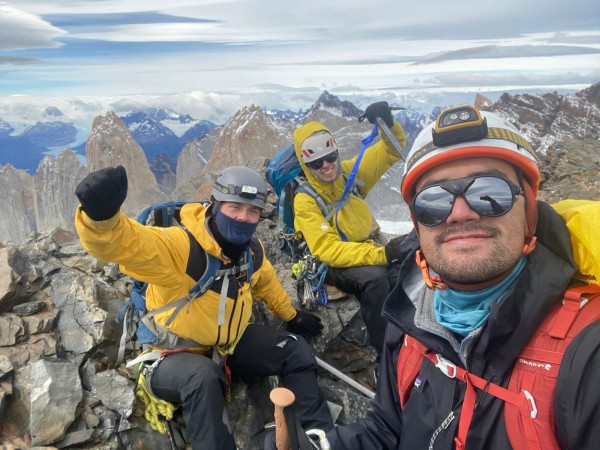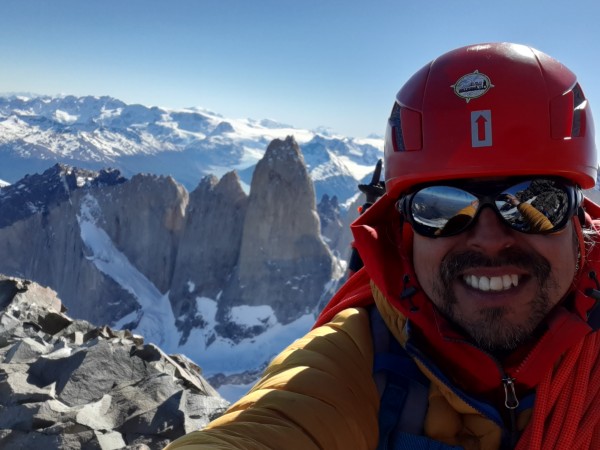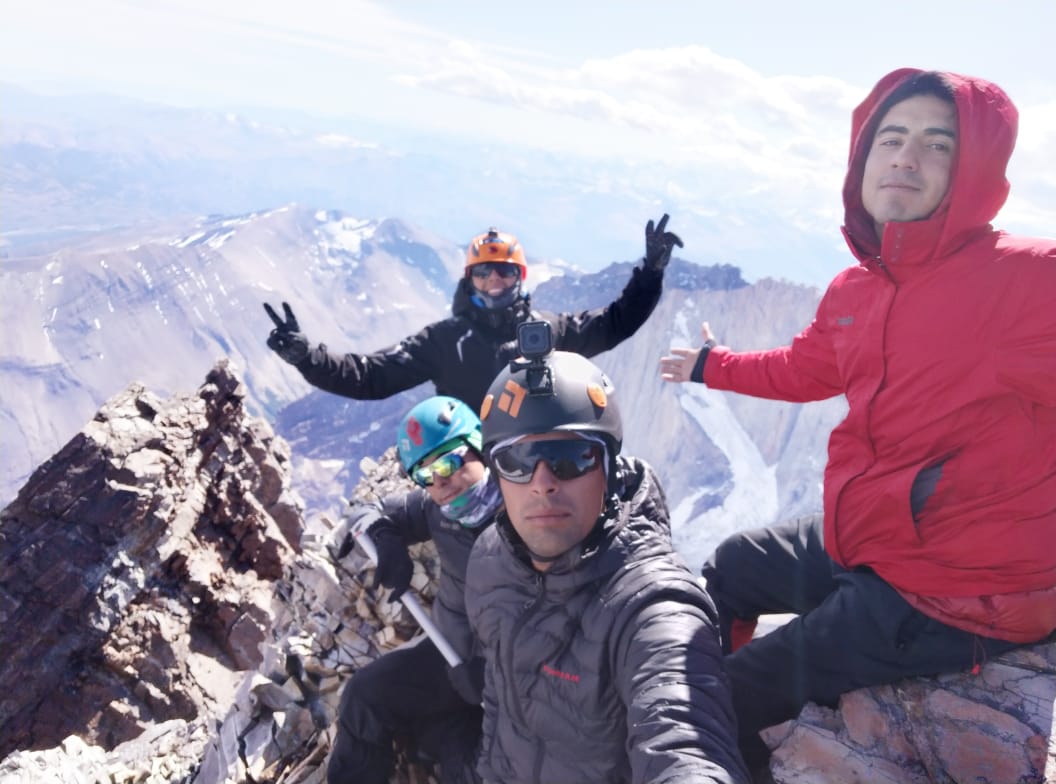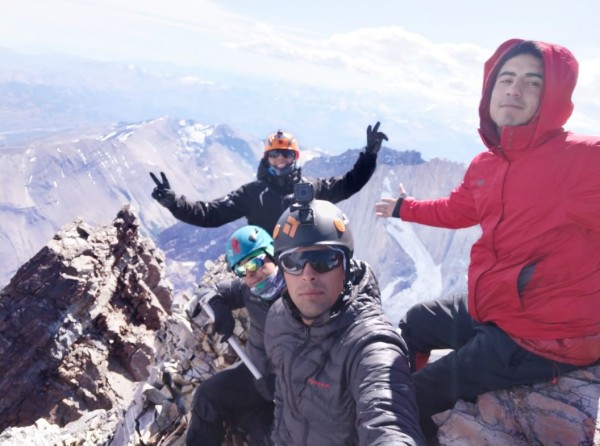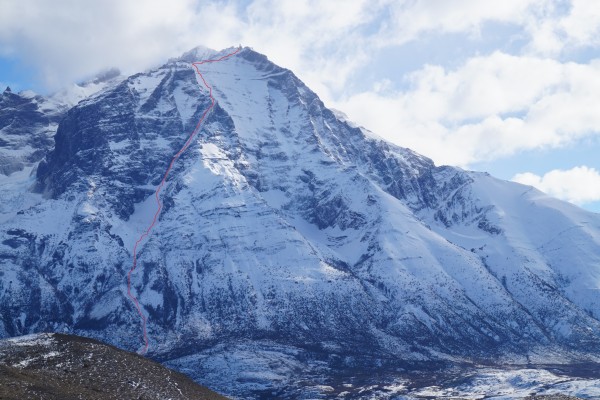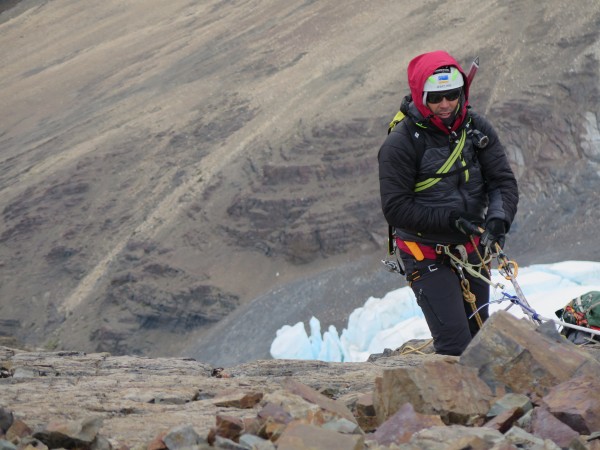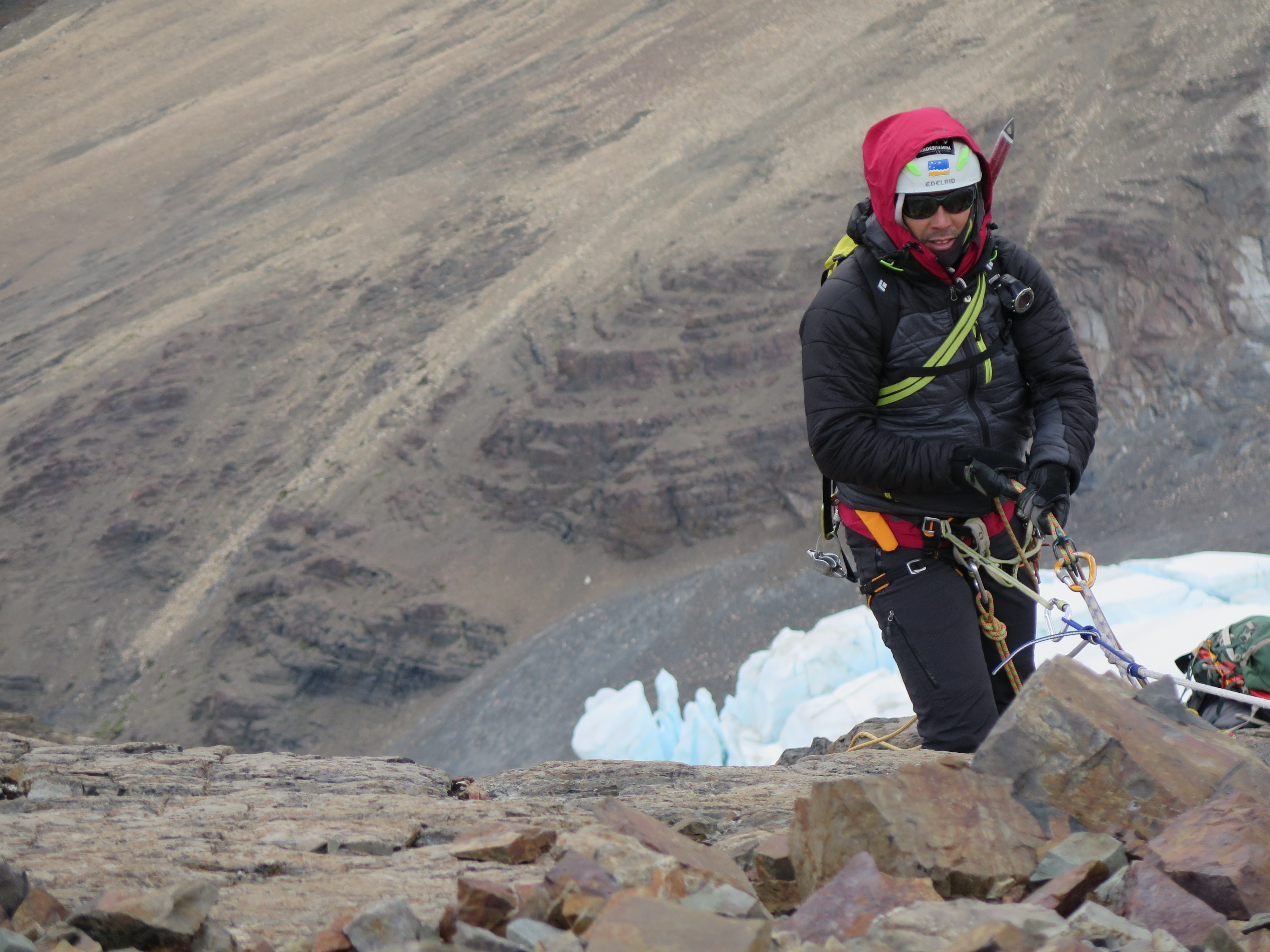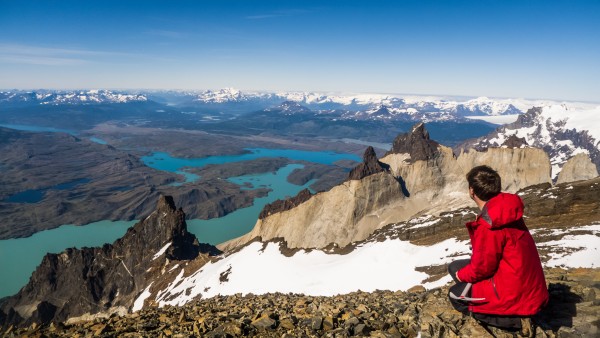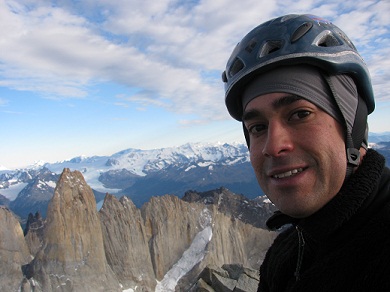Cerro Almirante Nieto (2.697m)
Región de Magallanes, Grupo del Paine del Hielo Patagónico Sur, Macizo del Paine. Parque Nacional Torres del Paine. / Ciudad cercana: Puerto Natales
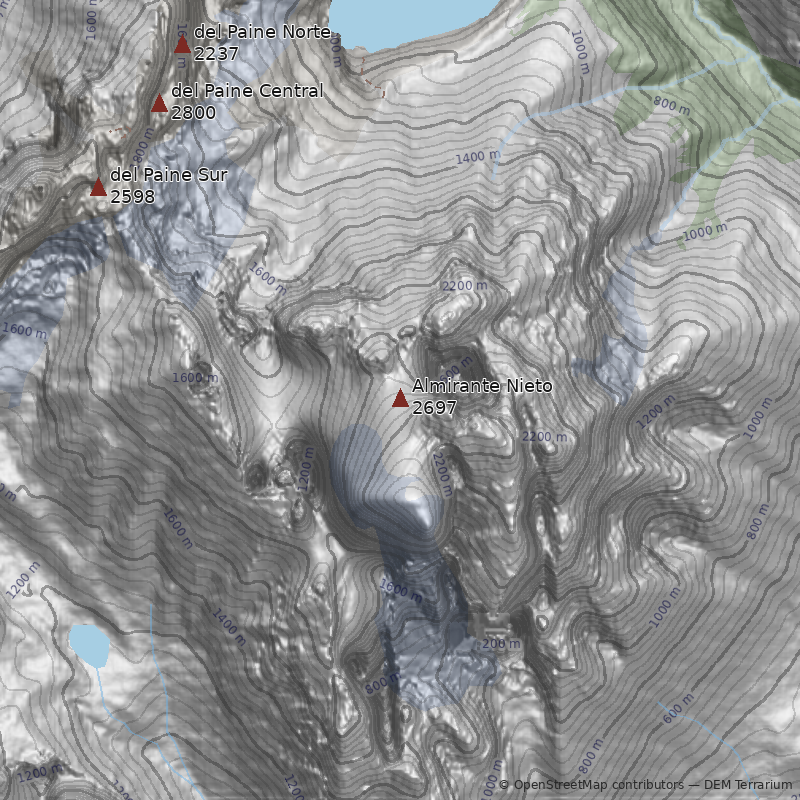 AHB Maps
AHB Maps
Fecha publicación: 25-05-2003
Última actualización: 21-02-2024
Presentación
Introducción
El Almirante Nieto forma parte de uno de grupos de montañas más famosos de la Patagonia y del mundo, el denominado Macizo del Paine. Ubicado en el extremo suroriental del macizo, está compuesto de una cima este, la más alta, y de una oeste caracterizada por la gran pared de granito que presenta en la cara occidental.
Junto a él, se elevan por el norte las conocidas Torres del Paine y por el oeste, los increíbles Cuernos, Máscara, Hoja y Espada. El hecho de estar rodeado de tan magníficas agujas de granito, ha producido que el Almirante Nieto pase un poco ignorado por los visitante del Parque Nacional Torres del Paine; sin embargo, si se visualiza con detenimiento es posible distinguir que esta cumbre es, quizás, la más multifacética del grupo. Cada una de sus caras es diferente y lo hacen parecer un cerro distinto; por el este, su cara más nítida y reconocida -está justo al frente de la entrada Laguna Amarga del parque que es adicionalmente la más frecuentada-, muestra una forma bastante esbelta y alba, con un tremendo glaciar colgante que baja desde la cumbre principal hacia el sureste. Por el sur, se presenta como una mole de roca sedimentaria negra con filudos espolones, atravesada tan solo por un enorme glaciar que baja casi desde las dos cumbres, y que, en lo profundo de las paredes ya erosionadas, pareciera ser una cascada de hielo gigante. Por el oeste, una pared vertical de granito naranjo ha hecho de esta parte del cerro una de las más fotogénicas puesto que durante los atardeceres, especialmente en verano, se ilumina tomando matices amarillos, naranjos y rojos. Finalmente, por el norte, se ve extraño ya que se juntan las paredes de granito con las de roca sedimentaria y los canalones de nieve que suben entre los escarpados filos y gendarmes.
No obstante ser de las cumbres menos vistosas del macizo, es hoy -debido a su accesibilidad- la más escalada ya que cuenta con una ruta normal de menor dificultad en comparación a la de sus vecinos. Aún así, las solas condiciones climáticas de Patagonia hacen de esta escalada un interesante proyecto de montaña, además de ser el mejor mirador de las Torres y de la parte sur del parque. Es importante mencionar que la mayoría de las caras del Almirante Nieto se presentan aún casi vírgenes esperando a montañistas que gocen, especialmente, con las escaladas mixtas de roca-nieve-hielo.
Toponimia
Las primeras noticias acerca de ascensiones en la región de los Andes Patagónicos surgen de la lectura del sacerdote salesiano Alberto María De Agostini, quien recuerda que en 1931 y en 1937 estuvo en el macizo del Paine el doctor Gustavo Fester, alemán, a quien en la expedición de 1937 acompañaron algunos montañistas. En esa ocasión, Hans Teufel y Stefan Zuck, del Club Alpino de Baviera, lograron alcanzar la cima este, recorriendo la cresta noreste y bautizando al cerro como Almirante Nieto. Hay varias teorías que intentan explicar esta denominación. Una de ellas dice que los alemanes la habrían llamado así en honor a la persona que intercedió por ellos en la obtención del permiso de escalada que los autorizaba a emprender dicha aventura. La segunda, asegura que el señor Nieto habría ayudado a estos escaladores a llegar a la región. Por último, en 1898 Francisco Nieto Gallegos, almirante de la Armada chilena, habría subido por el seno de Última Esperanza y luego por el río Serrano hasta avistar el macizo del Paine. Al parecer, este señor habría sido el primero en fotografiar el macizo. Adicionalmente, esta cumbre es también llamada Paine Chico y/o Paine Este.
Permiso de escalada
Desde el año 2002, el Parque Nacional Torres del Paine no cobra permiso de escalada a ninguno de los cerros que en él se encuentran. Para todas las ascensiones hay que dirigirse a la Administración del parque y solicitar la autorización correspondiente. No obstante, todo escalador o miembro de alguna expedición debe cancelar su entrada normal. Están eximidos de este cobro todos los andinistas miembros de la Federación de Andinismo de Chile que se presenten en la entrada con sus respectivos carnéts de federados. Los andinistas extranjeros, deben solicitar adicionalmente un permiso a la Dirección de Fronteras y Límites de Chile (DIFROL); los requisitos para efectuar este trámite están publicados en www.difrol.cl , en la sección "Autorización de Expediciones".
Nota
En la carta IGM de la zona este cerro también recibe el nombre de Paine Chico.
Características de la montaña
Primera ascensión
Año: 1937- Hans Teufel (DE)
- Stefan Zuck (DE)

